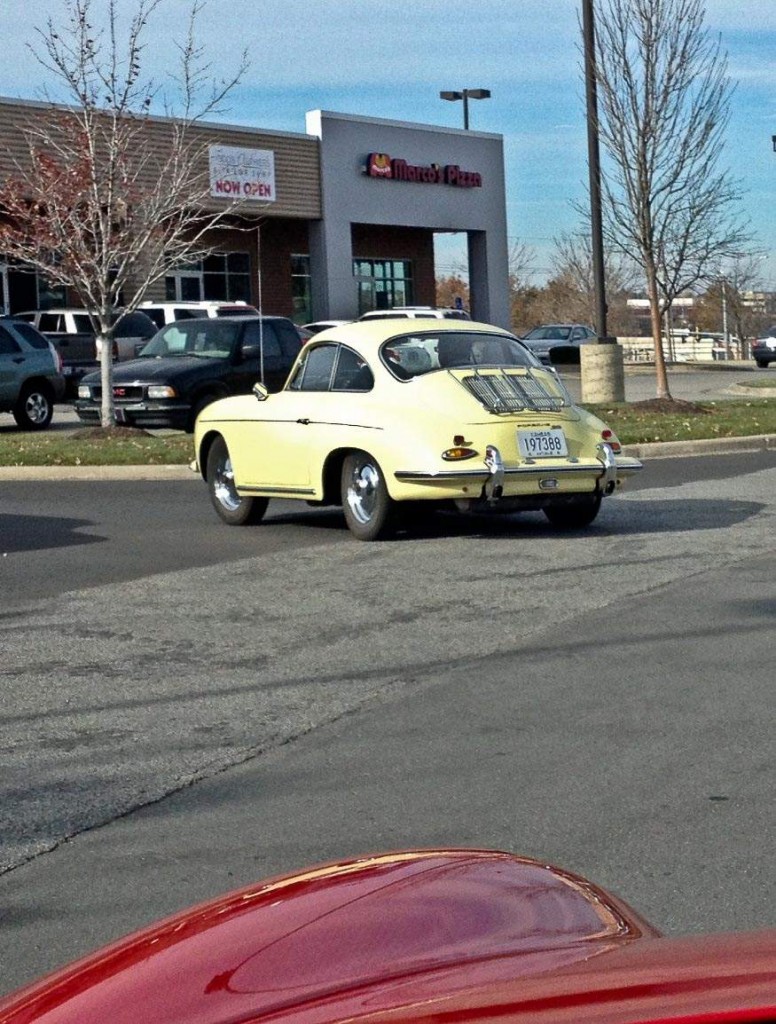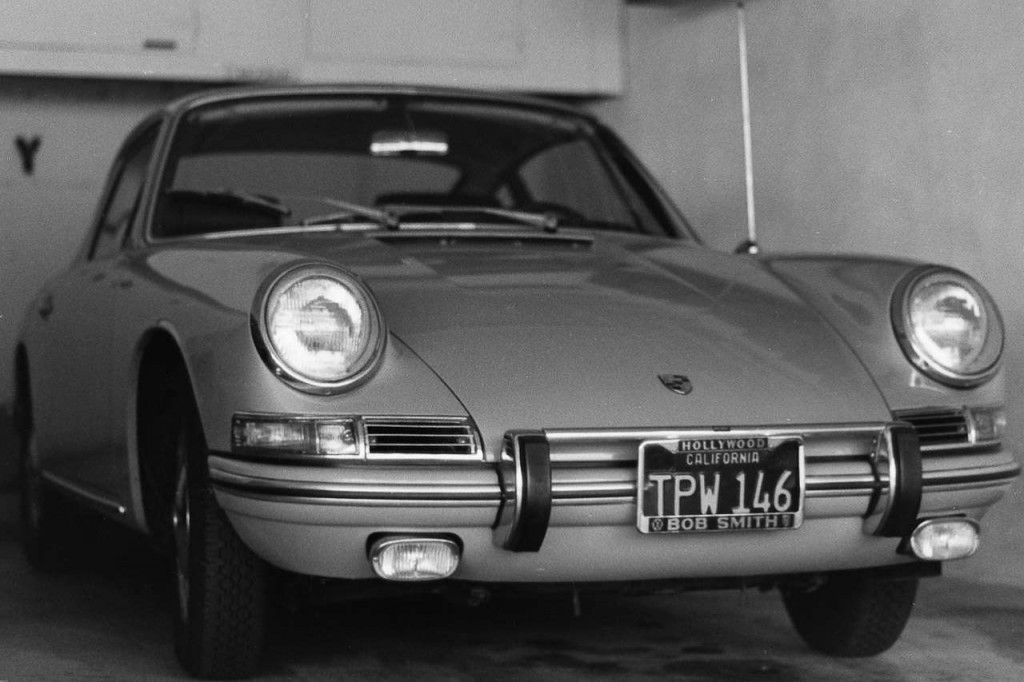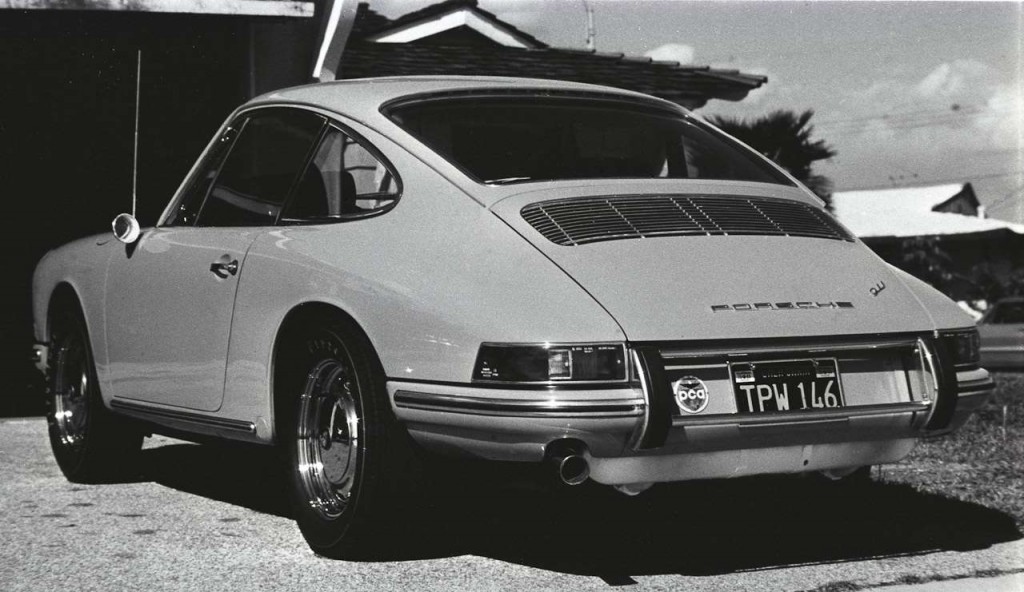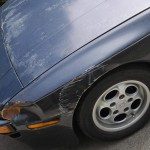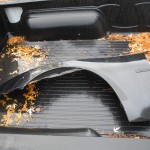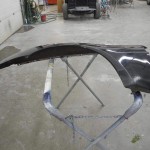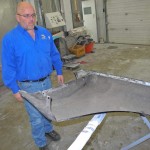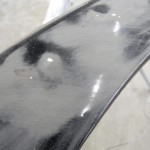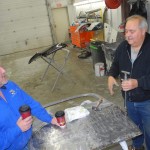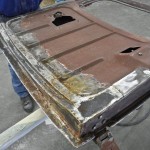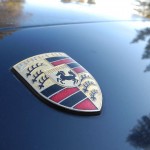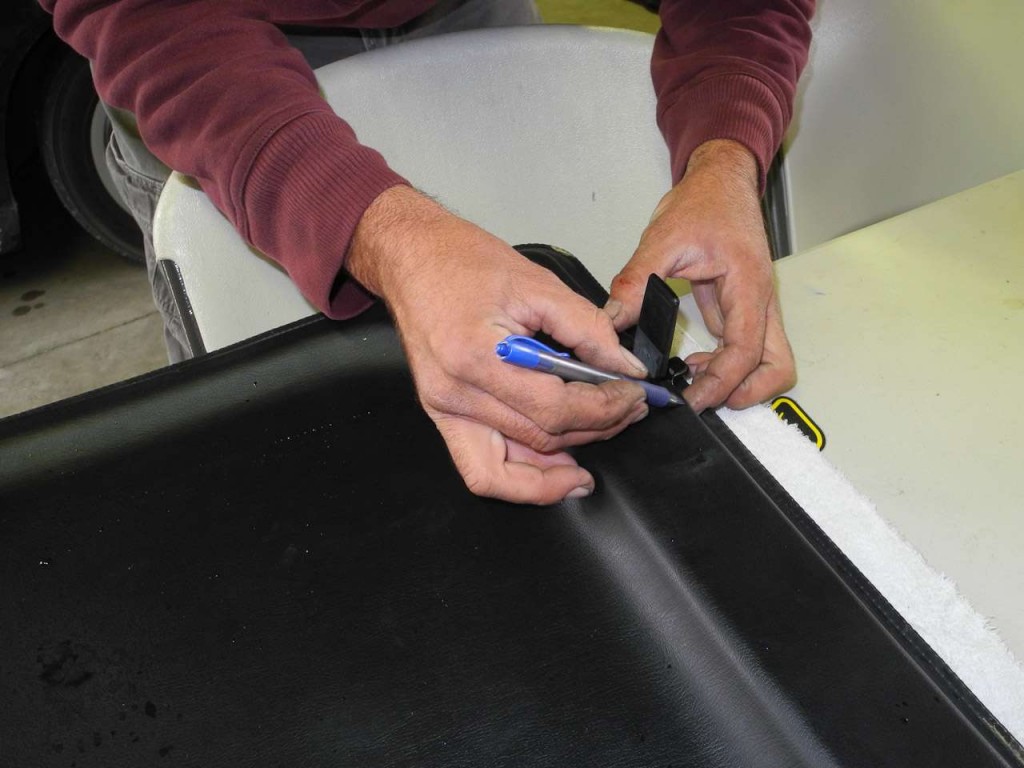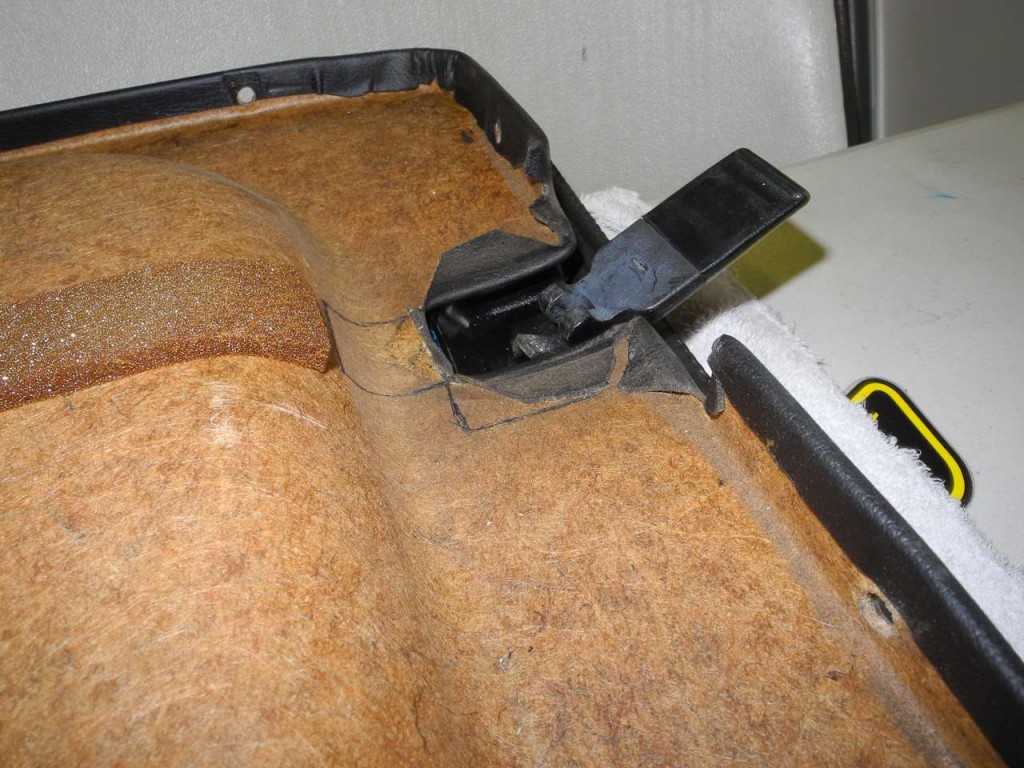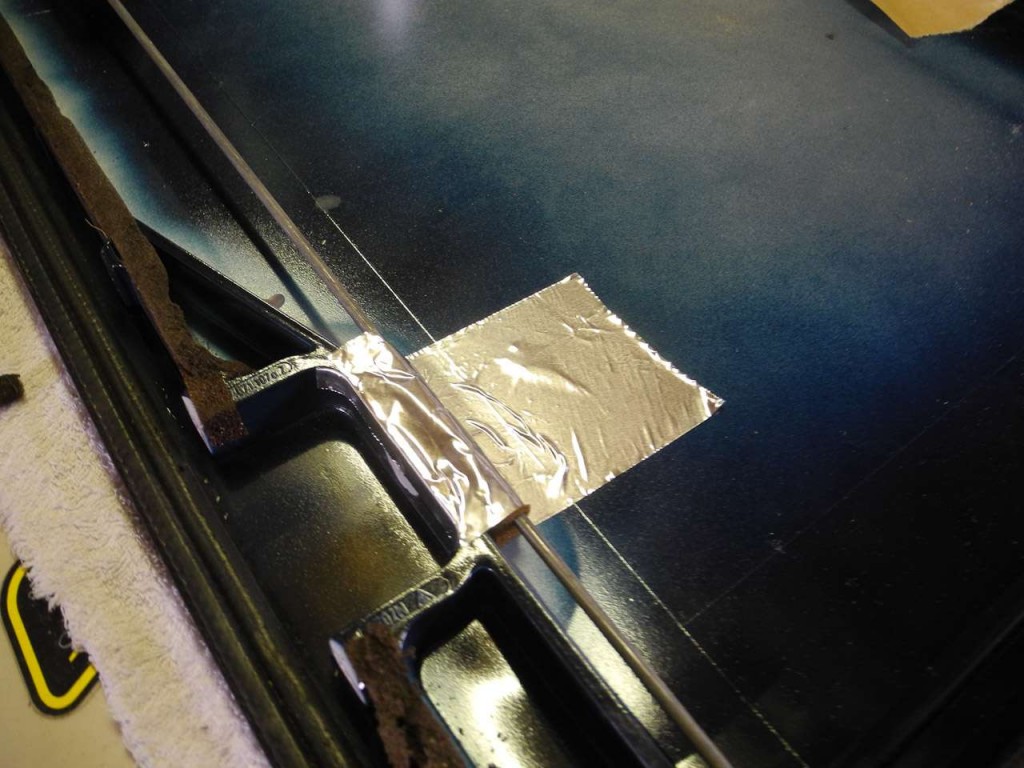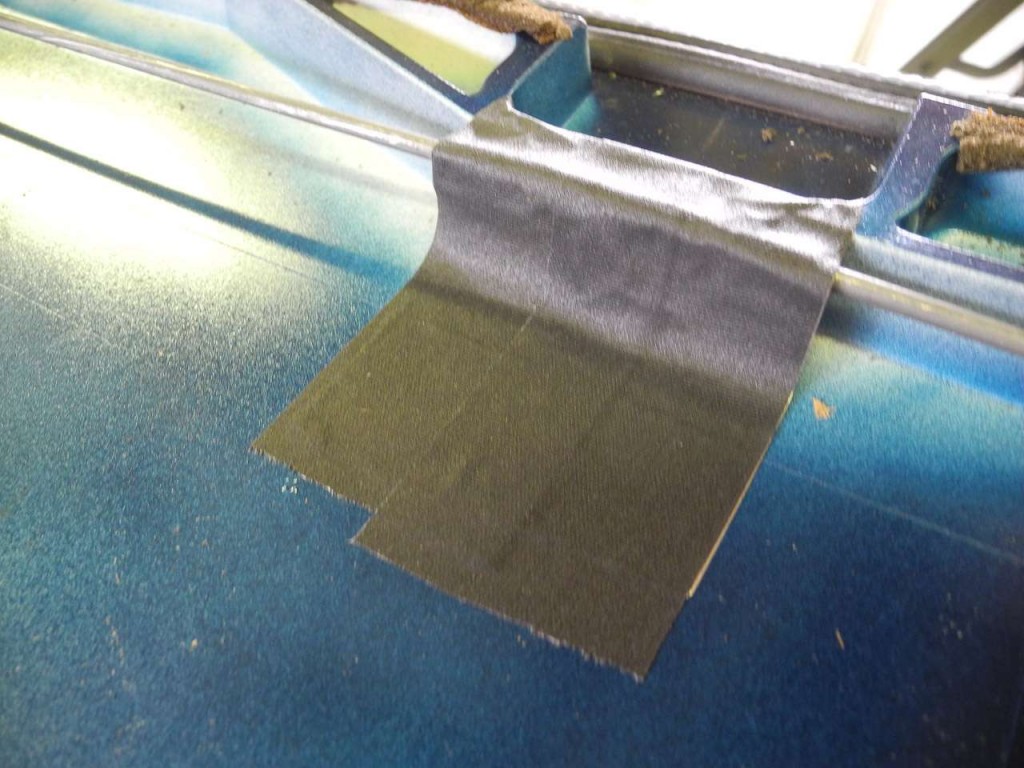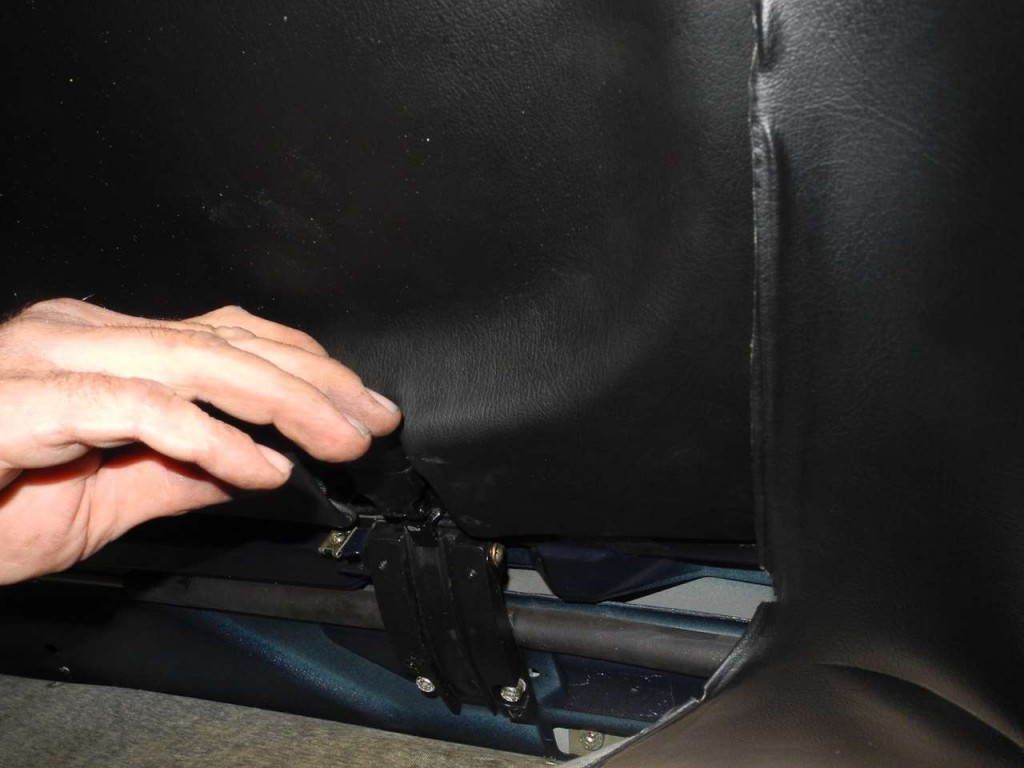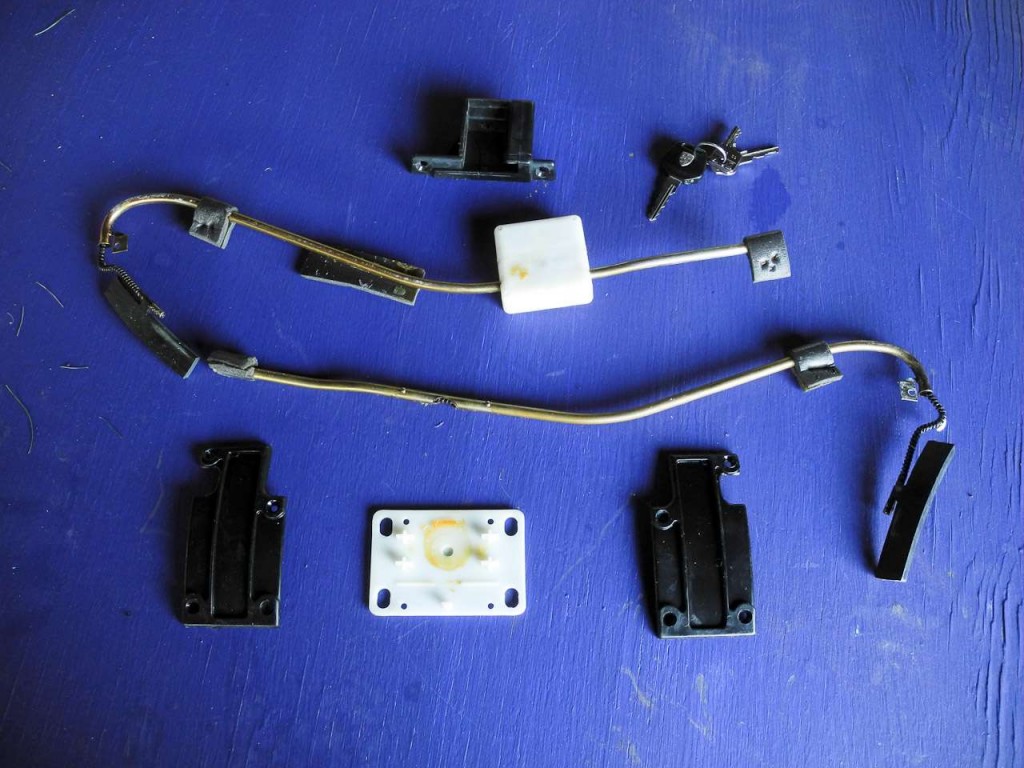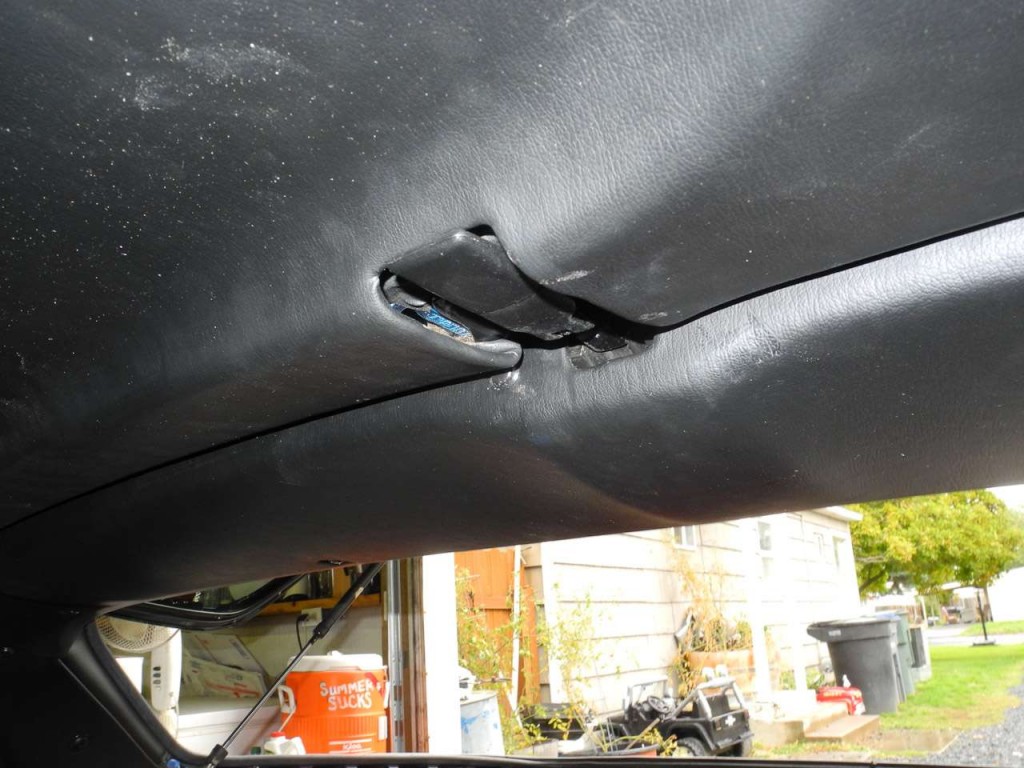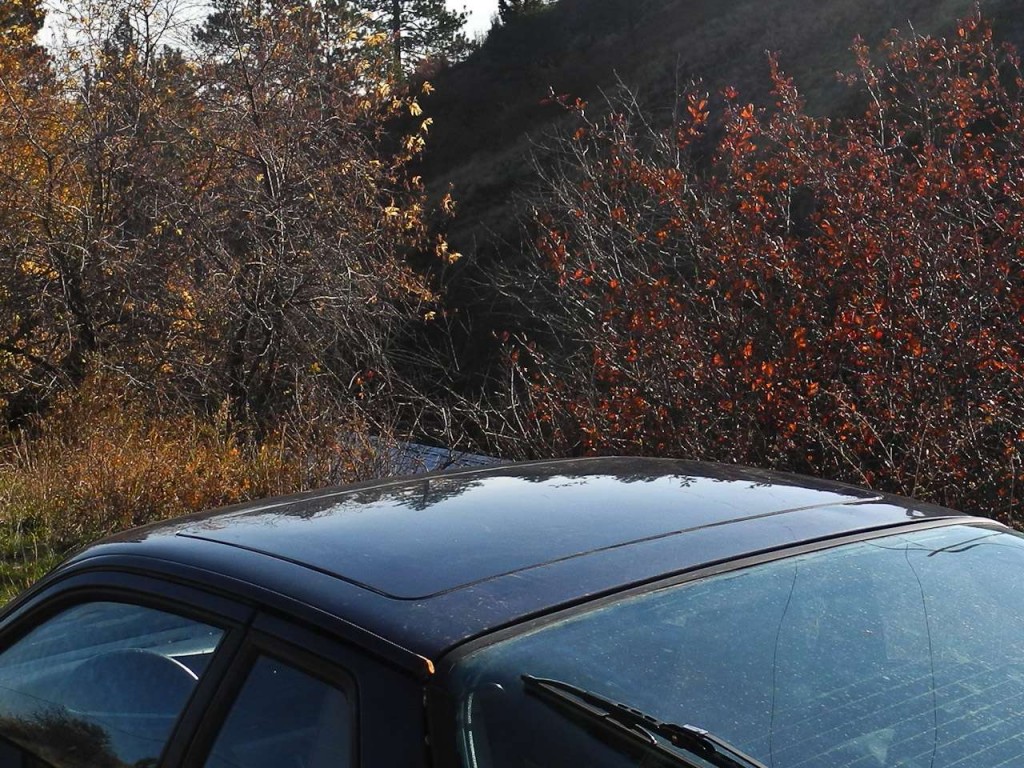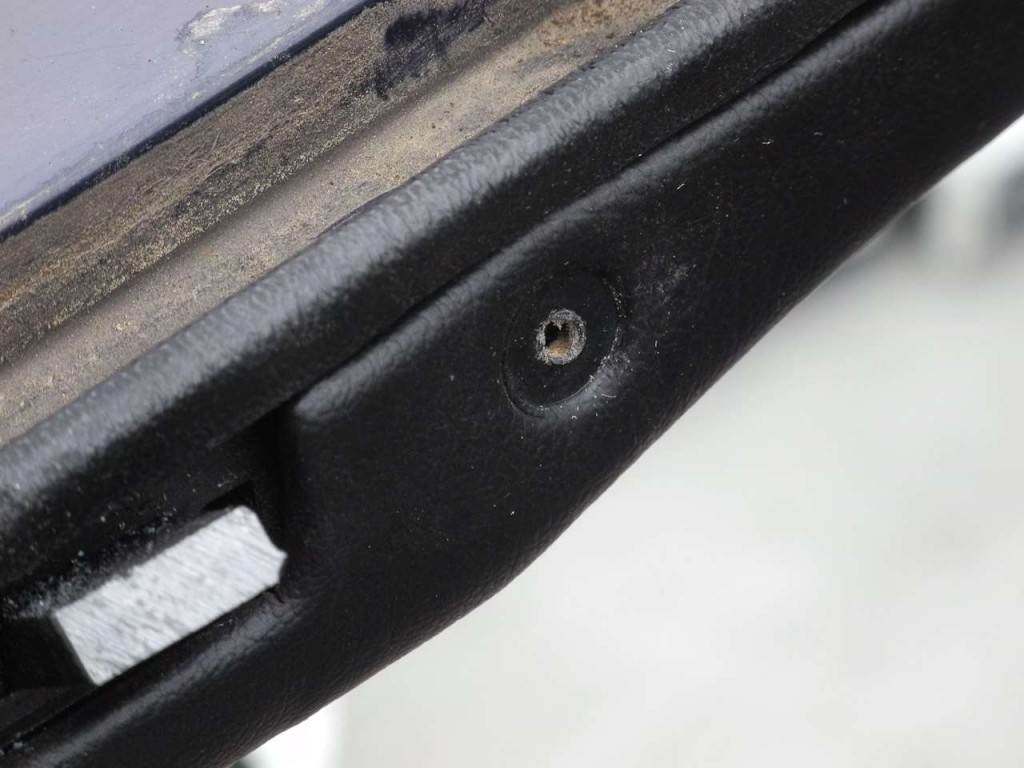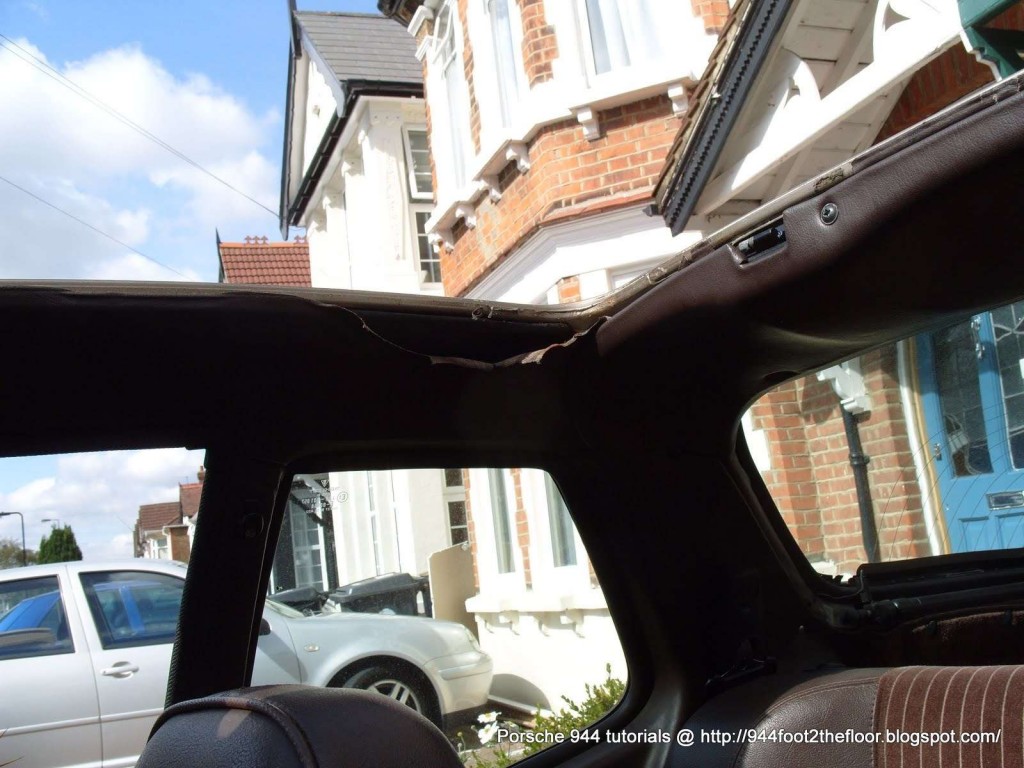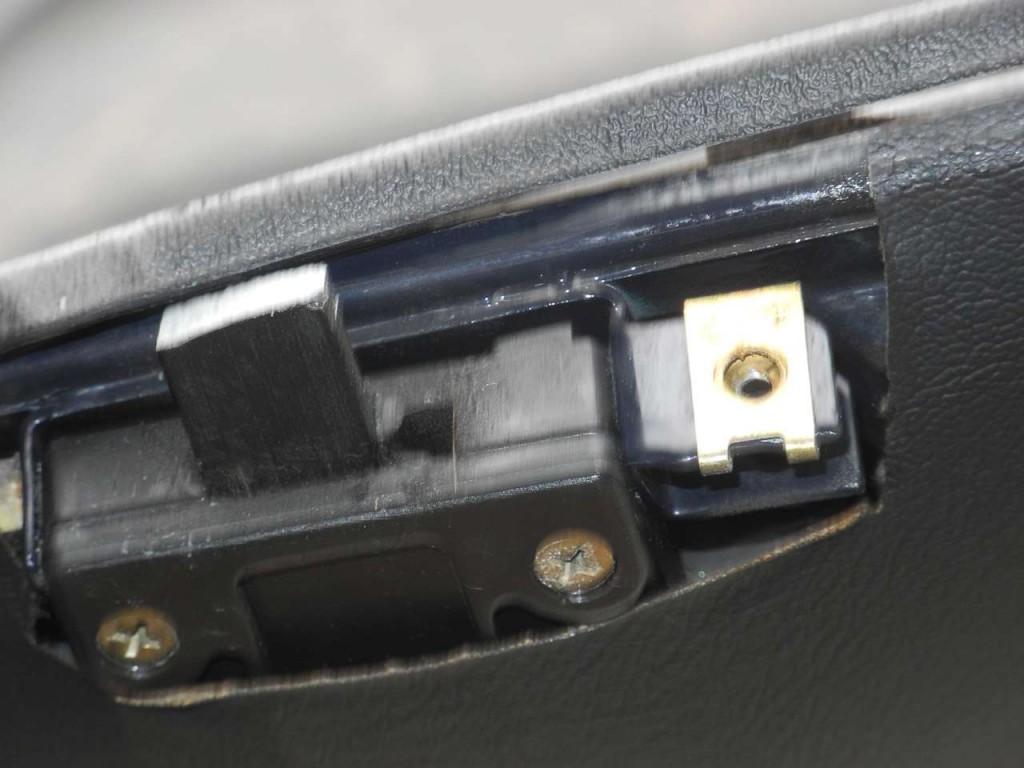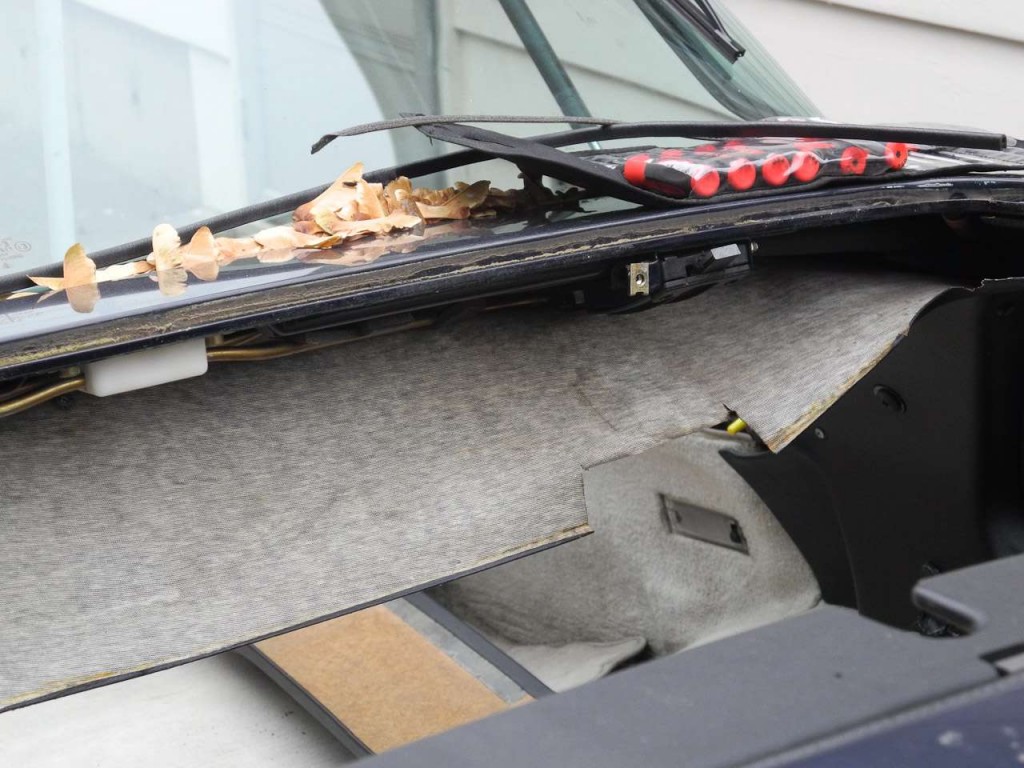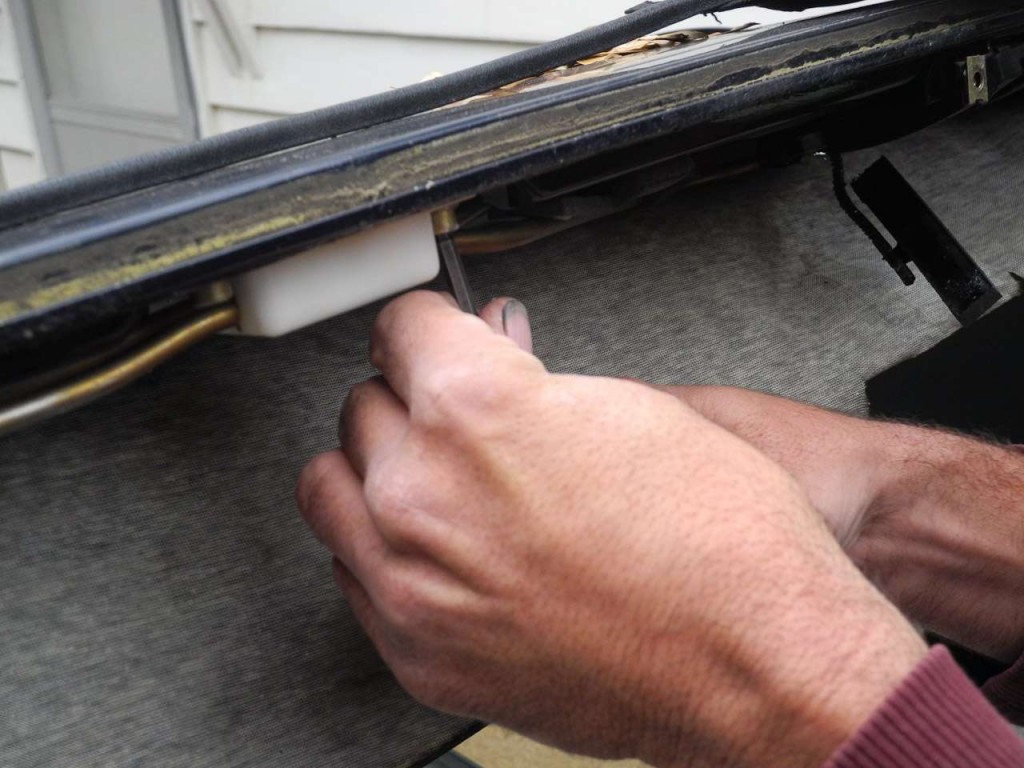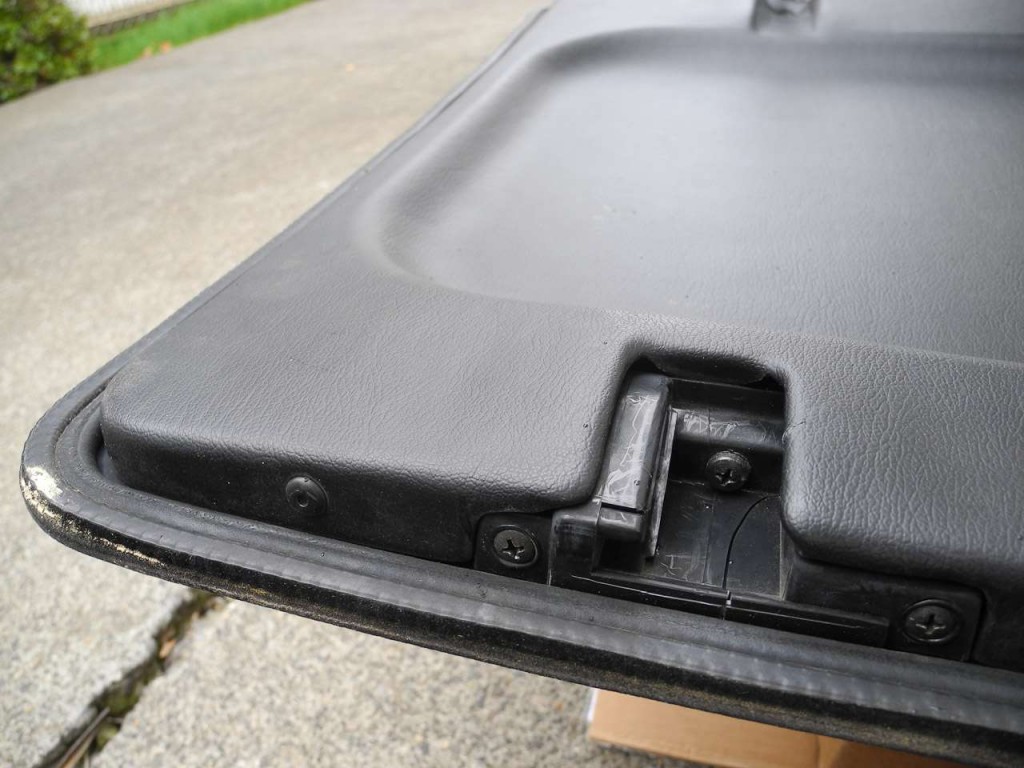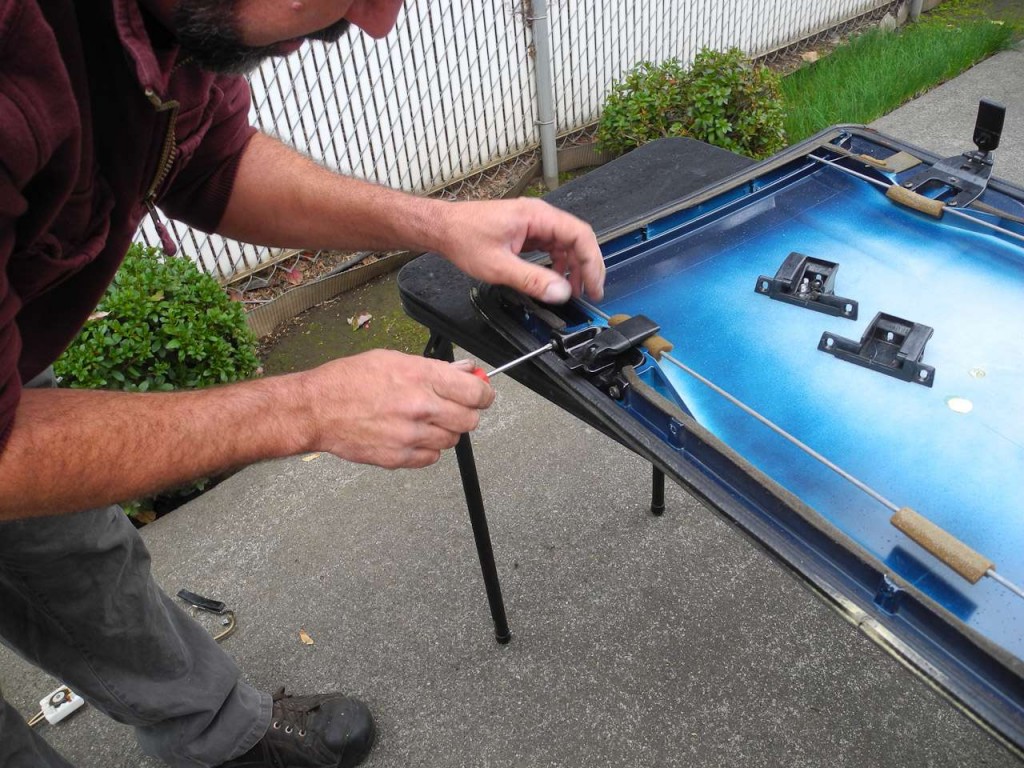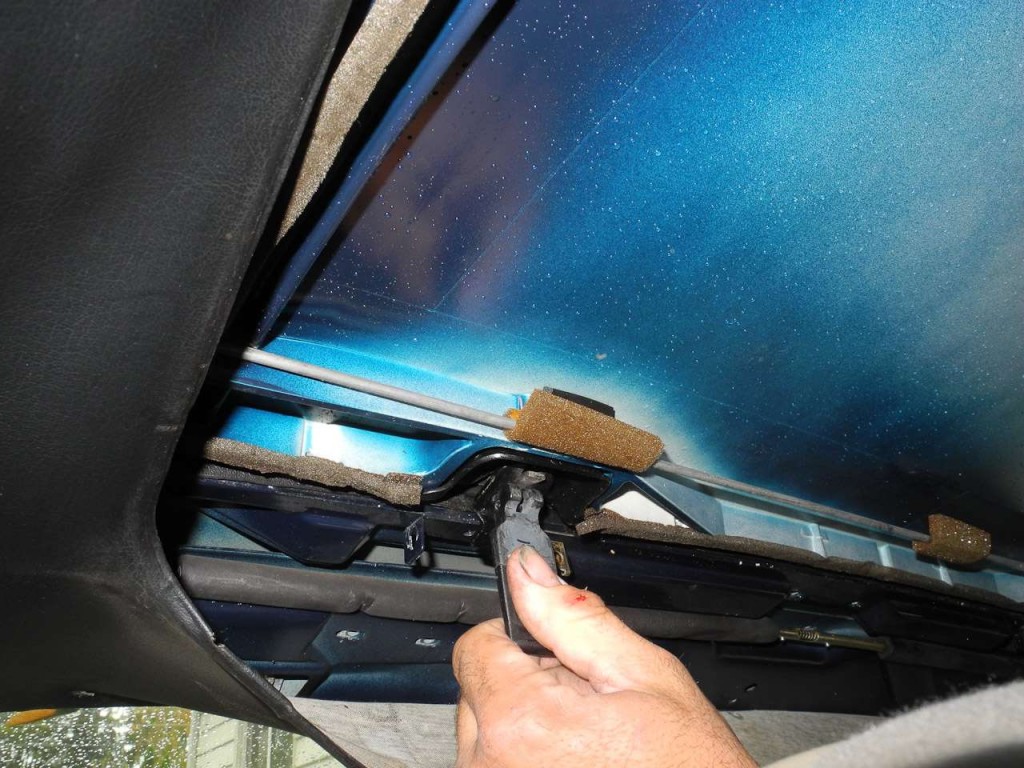Let’s pick up from where we left off a couple of weeks ago…
BACKGROUND
My 944’s sunroof has apparently not worked for some time, a long time. The previous owner, Michelle, told me that the previous owner before her said that the previous owner *before that* had explained that the sunroof was vandalized during that period of ownership. Seems that the car was parked with the sunroof in the open position at the rear when someone attempted to break in, unsuccessfully, by *sawing* through the rear hinges. As a result, this is what the rear body attachment points look like with the sunroof removed.

 These attachment points, or lifting arms, are quite small, measuring about 1/8 inch thick
These attachment points, or lifting arms, are quite small, measuring about 1/8 inch thick
by 5/8 inch wide (don’t know how long, perhaps several inches, but they extend into the rear deck body to connect with some sort of lifting/controlling mechanism — and this mechanism was apparently changed for February 1986 and later vehicles), one near each corner, intended to mate up with the rear edge of the sunroof. I don’t have anything to illustrate how a proper sunroof looks in the rear lifted position, and I haven’t been able to inspect an actual live example. But what remains on my sunroof panel itself are two corresponding “socket” areas, which now appear like this (sunroof pictured upside-down, of course):
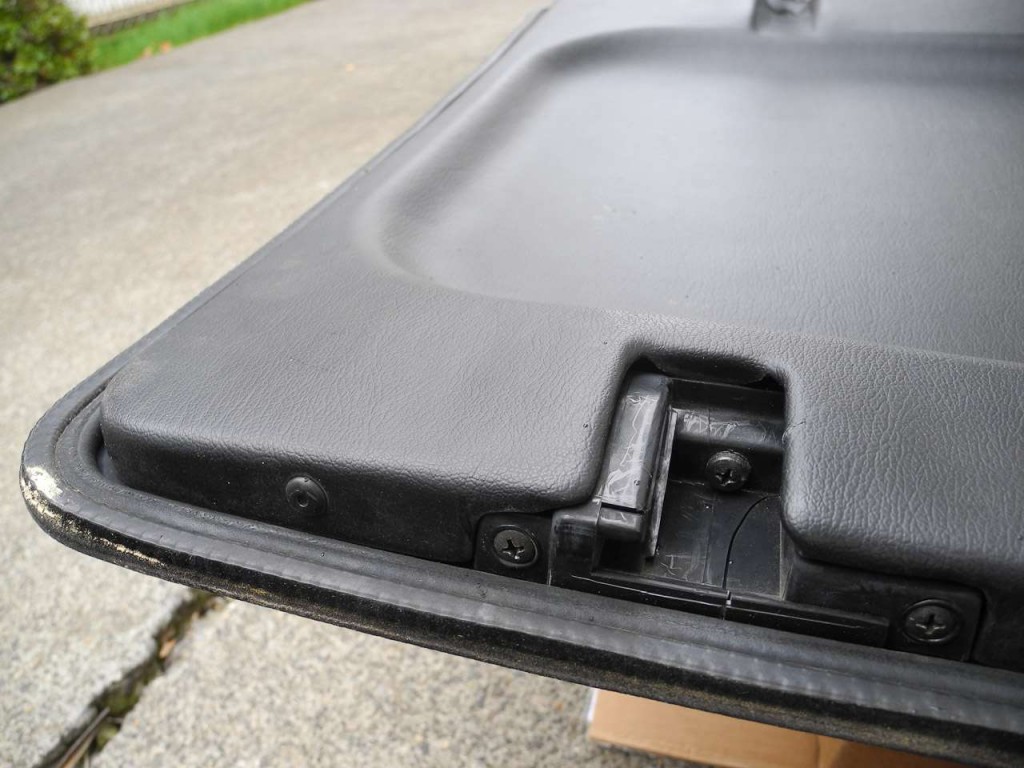

With the sunroof resting in place, but unattached:

How It Should Work
On the console just in front of and to the left of the shift lever is a rocker switch. In a properly functioning system, you should be able to (1) turn the ignition switch to “position 1”, then depress the top/front of the rocker to UNLOCK a closed sunroof, or (2) turn the ignition switch to position 1, then depress the rear/bottom of the rocker switch to LOCK a sunroof in place. This never had any effect for me, nor did I ever hear any electrical motor or any other sign of activation. Once after he checked it out, Jason did get some hum and a slight bit of movement from the sawed-off stumps protruding from the body, but couldn’t get this action to repeat again. Note that we never did go so far as to dig into the motor itself (read on to see why).


Removal of the Sunroof Panel
Since there is no connection between the sawed-off stumps from the body and the sunroof panel, it is a simple matter to completely remove the panel, starting by unlatching it at the front, as illustrated here:
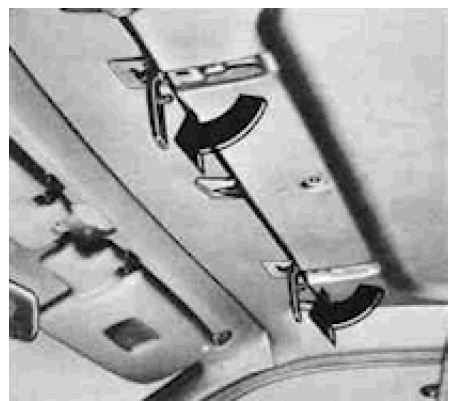
Then it is possible, still inside the cabin, to reach rearward and lift up the rear edge of the sunroof, twisting it and situating it on the rear deck (and inserting it into its storage bag, if desired). However, while the sunroof panel itself is very light, it is awkwardly sized and proportioned as a one-person proposition. I prefer to stand outside, preferably with an assistant, with each of us on opposite sides of the opened doors, for much easier manipulation.

By tipping the rear edge up to angle the sunroof panel, it can then be easily pulled away from its retaining wind deflector slots as shown above. (In my case, I also have a broken hinge at the left rear corner of the deflector, an issue of much lower priority, but which will need to be addressed sometime.)
Consequences of Broken Lifting Arms and An Untethered Rear Edge
With only gravity holding the sunroof in place at the rear, flapping and fluttering at speed (especially when the windows are rolled up) is not only annoying but has obvious implications for rain or snow and perhaps a nasty lift-off. By opening the windows, the air pressure change does tend to keep the sunroof down, but that is hardly a solution in colder weather. Michelle told me that she had actually used a bungee cord arrangement before to keep the sunroof in place. I think we can come up with something better.
Why no previous owner ever repaired the sunroof is unknown to me, but I did read a forum post or two about the outrageous four-figure price some have been charged by their Porsche dealers for a fix. And let’s not feed any of my paranoia by suggesting that neglected maintenance in this non-critical area might just indicate a pattern of more wholesale neglect! I admit that I would generally prefer no fix to a bad fix for a non-business/operational-critical issue.
Potential Solutions
My first move was to check out Clark’s Garage (just about the very first site I visit for any 944 issue — thanks Clark!). The walk-through provided there appeared to be clear and thorough, but that seemed more than I wanted to take on. You can see Clark’s sunroof page here:
http://www.clarks-garage.com/shop-manual/body-03.htm
Some more research yielded a couple of YouTube videos:
http://youtu.be/zI8otuXR1ew
http://youtu.be/GzwgAafft1Y (read the comments as the vid doesn’t help on its own)
But what I really wanted was just to manually remove the sunroof now and then, yet leave it fully closed most of the time. Don’t care about the rear uptilt-vent-thing. Then I saw instructions in an older (’83) owners manual that indicated that some of these cars had fully manual sunroofs. I reasoned that I could convert my power sunroof to a manually-latched version, and was able to verify in some forum posts that this has indeed been done. But I found no specifics on how to go about it, and even saw some conflicting information on the topic: one forum poster said it was a simple matter of just bolting manual latches into the slots on the sunroof, while another said that it would almost certainly require cutting up the sunroof and headliner, not to mention disabling and/or removing the motor and related apparatus.
So thinking, “How hard could it be?” (almost always a flawed premise), I began a search for a set of manual rear latches. Turned out to be hard to find. I did locate a retail source for a new set, but was not about to spend the nearly $300 price. After several weeks, maybe it was months, Jason stumbled upon a used set for a fraction of that price on eBay, so I snatched them up. Here is what came in the mail:

Rear Latches – One Pair Needed (underside view)
And here is what an illustration of the usage of the rear latches from that older 1983 owner’s manual (my manual for the Blue Rascal only mentions the electrical version):

Note that this illustration shows that the latches must be swiveled to clear the bodywork before the sunroof can be removed. Looks like some surgery to the sunroof itself is likely going to be needed to gain clearance.
Okay, we seem to be ready to undertake this project. Stay tuned for Part 2.

